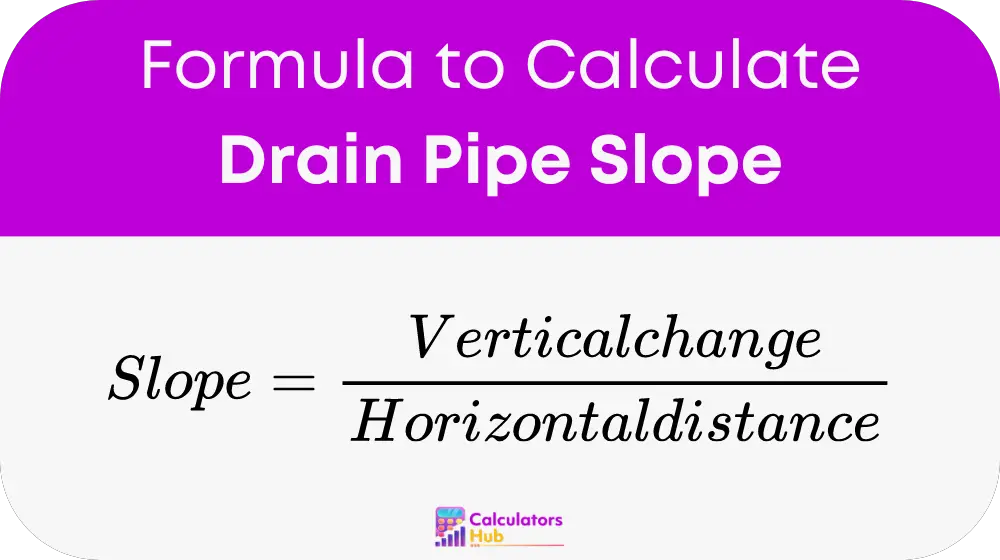The Drain Pipe Slope Calculator is an invaluable tool for anyone involved in the installation of drainage pipes. It calculates the necessary slope to ensure that fluids flow smoothly without stagnating within the pipe. This is crucial for maintaining the longevity and effectiveness of your plumbing system.
Formula of Drain Pipe Slope Calculator
The formula used by the calculator is straightforward:

Where:
- Vertical change: This is the elevation difference between the start and end points of the pipe.
- Horizontal distance: This is the length of the pipe from start to end along the ground.
Understanding this formula helps users ensure that their drainage systems are set up to function optimally.
General Terms Table
| Term | Definition | Typical Values (If applicable) |
|---|---|---|
| Slope | The angle of the pipe relative to the horizontal plane, necessary for gravity-driven flow. | 1/4 inch per foot (about 2%) |
| Grade | Another term for slope, often expressed as a percentage. | 1% – 5% |
| Vertical Change | The difference in height between the start and end points of the pipe. | Varies based on project |
| Horizontal Distance | The straight-line distance over the ground that the pipe covers. | Varies based on project |
| Pipe Diameter | The internal diameter of the pipe, important for calculating flow rates. | 1.5 inches to 4 inches (residential) |
| Flow Rate | The volume of fluid that can pass through a pipe per unit of time, dependent on diameter and slope. | Varies based on diameter and slope |
Example of Drain Pipe Slope Calculator
Let’s say you need to install a new drain pipe in your home. The vertical change is 1 foot, and the horizontal distance is 20 feet. Using our formula, the slope would be calculated as follows:
Slope = 1 ft / 20 ft = 0.05 or 5%
This means a 5% slope is need for efficient drainage.
Most Common FAQs
For residential projects, a general rule of thumb is a slope of 1/4 inch per foot of pipe, ensuring optimal flow without risking rapid water transit that might leave solids behind.
Incorrect sloping can lead to water stagnating or flowing back, which can cause clogs and back-ups, stressing the plumbing system.
While primarily designed for smaller or residential projects, this calculator also offers valuable guidance for larger projects by scaling the input values accordingly.